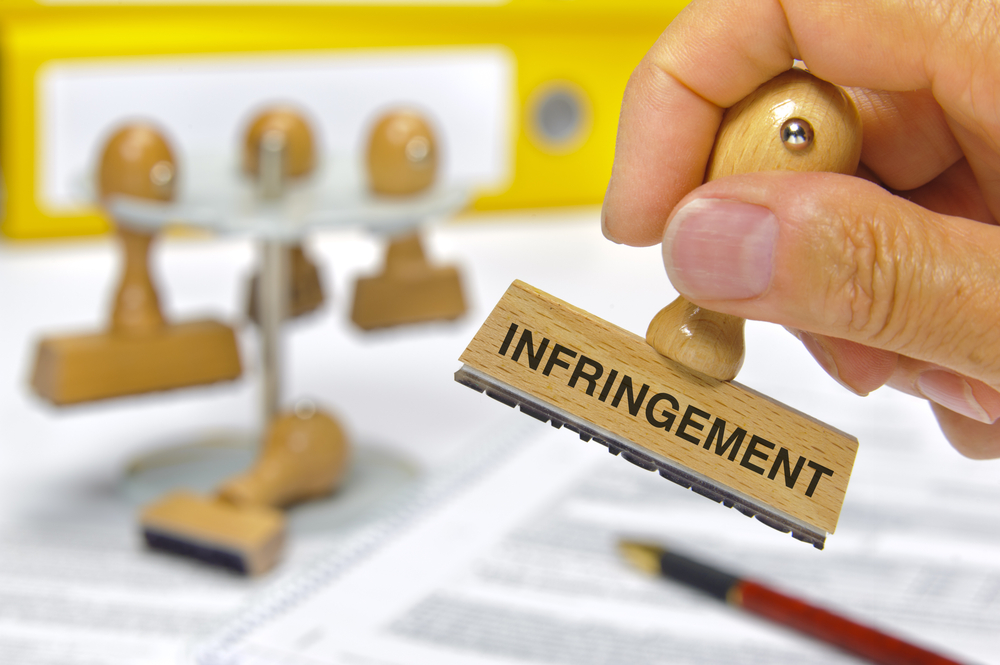Trademark Infringement occurs when someone uses a trademark that is identical or confusingly similar to your registered trademark without permission. This unauthorized use can confuse customers, harming your brand’s reputation and financial standing. Protecting registered trademarks is essential to maintaining your brand’s uniqueness and market position. When infringement happens, it weakens your brand, causing potential loss of customers and revenue.
What is a Trademark Infringement Notice?
A trademark infringement notice is a formal legal communication from the owner of a registered trademark to another party, accusing them of unauthorized use of the trademark. The notice typically demands that the infringer immediately cease using the mark and may include claims for damages, compensation, or an injunction. When you register a trademark, you acquire exclusive rights to use the mark with your goods or services. Unauthorized use of your trademark or a similar mark by another party constitutes infringement, misleading consumers and harming the goodwill your brand has established over time. A trademark infringement notice is the first step in resolving such disputes.
Why Protect Your Brand with a Trademark Infringement Notice?
1. Maintain Brand Integrity:
Your trademark represents the quality and identity of your products or services. Unauthorized use can cause customer confusion and damage your brand’s reputation. Issuing an infringement notice helps safeguard your brand’s distinctiveness and ensures others don’t exploit it for their benefit.
2. Prevent Market Confusion:
Infringement can create significant market confusion. Customers might mistakenly associate inferior products or services with your brand, diminishing its value. Protecting your trademark ensures that consumers identify your brand with the quality and service you provide.
3. Enforce Legal Rights:
When you register a trademark, you obtain exclusive rights to use it. If someone infringes on these rights, you have a legal obligation to enforce them. A trademark infringement notice is often the first step in asserting those rights and preventing unauthorized use.
4. Avoid Dilution of Your Brand:
Brand dilution happens when the value or distinctiveness of your trademark diminishes due to unauthorized use. Issuing a trademark infringement notice prevents this dilution and protects your brand’s market impact.
How Does a Trademark Infringement Notice Work?
The trademark infringement notice process typically begins with identifying unauthorized use of your trademark. Regular monitoring of the market, online platforms, or competitors can help detect potential infringements. Once identified, here’s how to proceed:
1. Assess the Infringement:
Before sending a notice, evaluate whether the infringement is genuine. In some cases, similar marks might not infringe on your registered rights. Consulting a legal expert at this stage will help you determine whether an infringement has occurred.
2. Gather Evidence:
Collect relevant evidence of the infringement, including how the infringer is using your trademark, where it is being used, and any potential harm caused to your brand. This documentation is vital for drafting the notice and supporting legal proceedings if needed.
3. Drafting the Infringement Notice:
The infringement notice should include the following:
-
Trademark Registration Details: Registration number, goods or services class, and geographical coverage of your trademark.
-
Infringement Details: How the infringer is using your trademark without authorization, and the potential harm caused.
-
Demand for Cessation: A clear statement that the infringer must stop using the trademark immediately.
-
Consequences of Non-Compliance: Legal consequences, such as a lawsuit or claims for damages, for continued unauthorized use.
-
Timeframe for Compliance: A reasonable deadline for the infringer to stop using the trademark and respond to the notice.
4. Sending the Notice:
Once drafted, send the notice via registered post or email to ensure proof of receipt. This serves as evidence in court if the case escalates.
5. Follow-Up:
After sending the notice, the infringer may comply, respond with a defense, or ignore the notice. Depending on the response, you may engage in settlement negotiations or escalate the matter to legal action.
Remedies Available for Trademark Protection
Issuing a trademark infringement notice is an effective remedy, but other legal actions may be necessary to protect your trademark:
1. Injunction:
If the infringer doesn’t comply, you can file a lawsuit for an injunction, a court order requiring them to stop using your trademark.
2. Damages:
You can seek damages for financial losses or harm caused by the infringement, including compensatory or punitive damages.
3. Account of Profits:
If the infringer profited from your trademark, you can request the court to order an account of their profits.
4. Destruction of Infringing Goods:
The court may order the destruction of products bearing the infringing trademark to remove them from the market.
Next Steps if You Receive No Response
If the infringer doesn’t respond to your notice, you have several options:
-
Engage Legal Counsel: An intellectual property lawyer can assist in further negotiations or legal actions.
-
File a Lawsuit: If the infringement harms your brand, consider filing a trademark infringement lawsuit for legal remedies.
-
Seek an Injunction: Request an injunction to prevent the infringer from continuing to use your trademark during the case.
Protecting Your Registered Trademark
Trademark protection requires vigilance. Regularly monitor the market for potential infringements and take prompt action when necessary. Consider publicizing your trademark rights and actively enforcing them to deter potential infringers. Additional steps to strengthen your brand protection include:
-
Renewing your trademark registration regularly.
-
Monitoring new trademark applications to ensure no conflicts.
-
Maintaining an active online presence to protect your brand in digital spaces.
Conclusion
A trademark infringement notice is a vital tool in safeguarding your brand’s reputation and ensuring others do not misuse your registered trademark. Protect your brand’s reputation by acting swiftly with a formal infringement notice. By taking proactive steps, you maintain your brand’s distinctiveness, prevent market confusion, and avoid dilution. If you suspect trademark infringement, don’t delay—issue an infringement notice to assert your rights and prevent unauthorized use.


